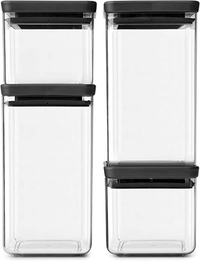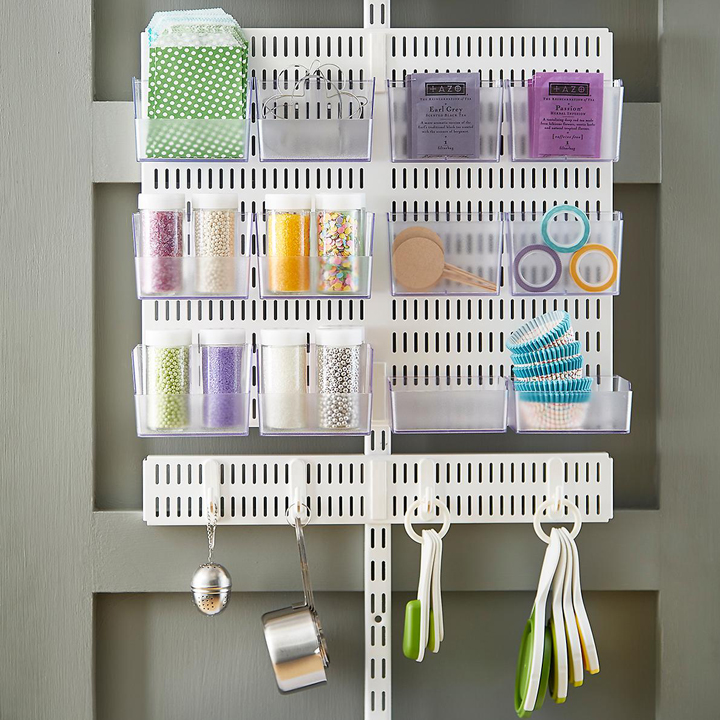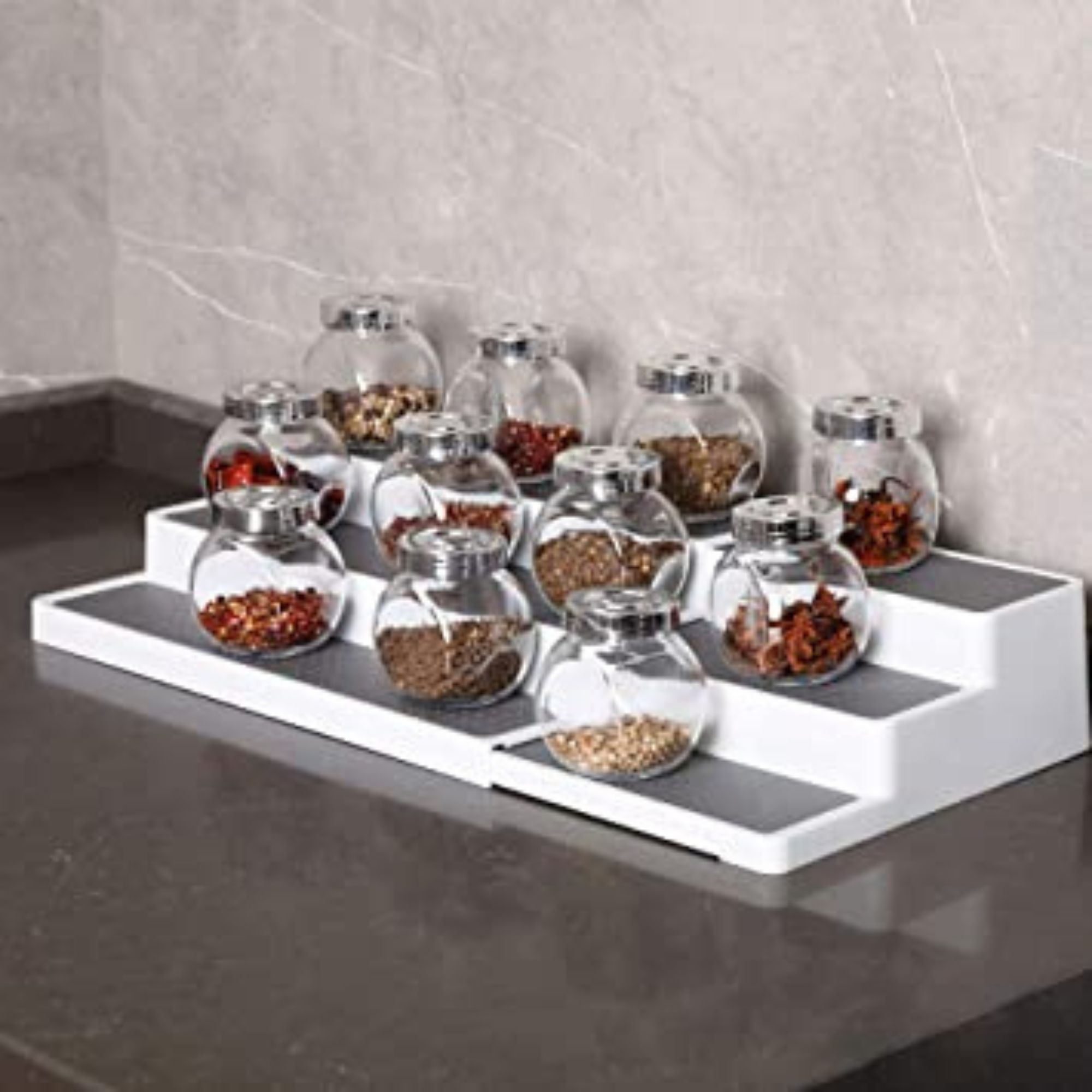Small pantry organizing mistakes – the 7 things professionals urge you to avoid
These small pantry organizing mistakes are more than just messy – they are incredibly impractical too
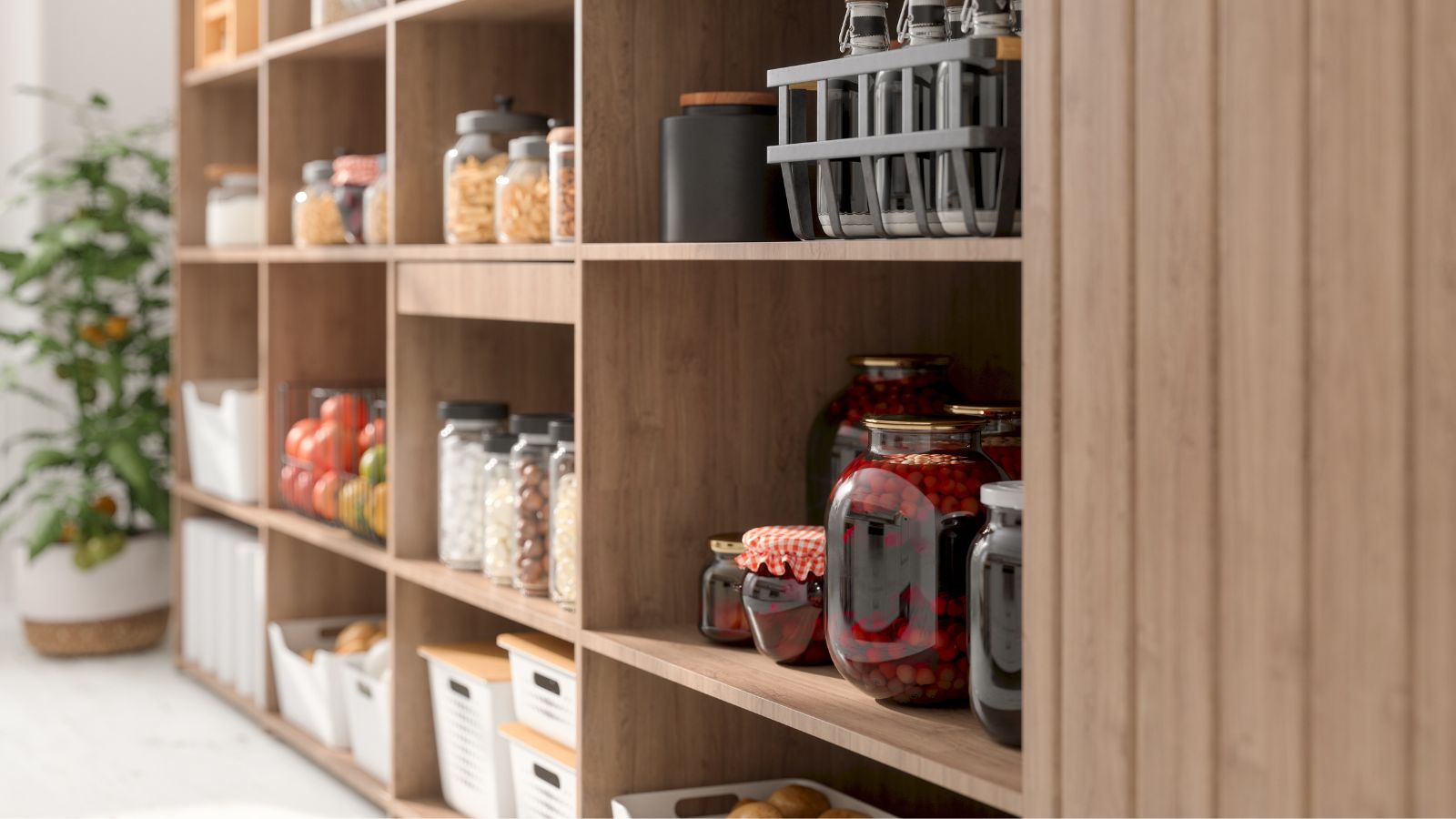

Small spaces are some of the most difficult to organize, and it is only made worse when they are in busy places like our home kitchens.
Organizing a small pantry may seem tricky, especially if you are a keen cook with a vast array of dried goods, but creating simple systems can help to restore order in the tightest of spaces.
Professional organizers see these seven small pantry organizing mistakes in almost every small kitchen. Here, they explain what you can do to avoid them.
Small pantry organizing mistakes
These seven organizing errors can disrupt the flow of our kitchens, even if they are concealed behind closed doors. Fixing them may not make you a better cook, but it will make life easier.
1. Bulk buying
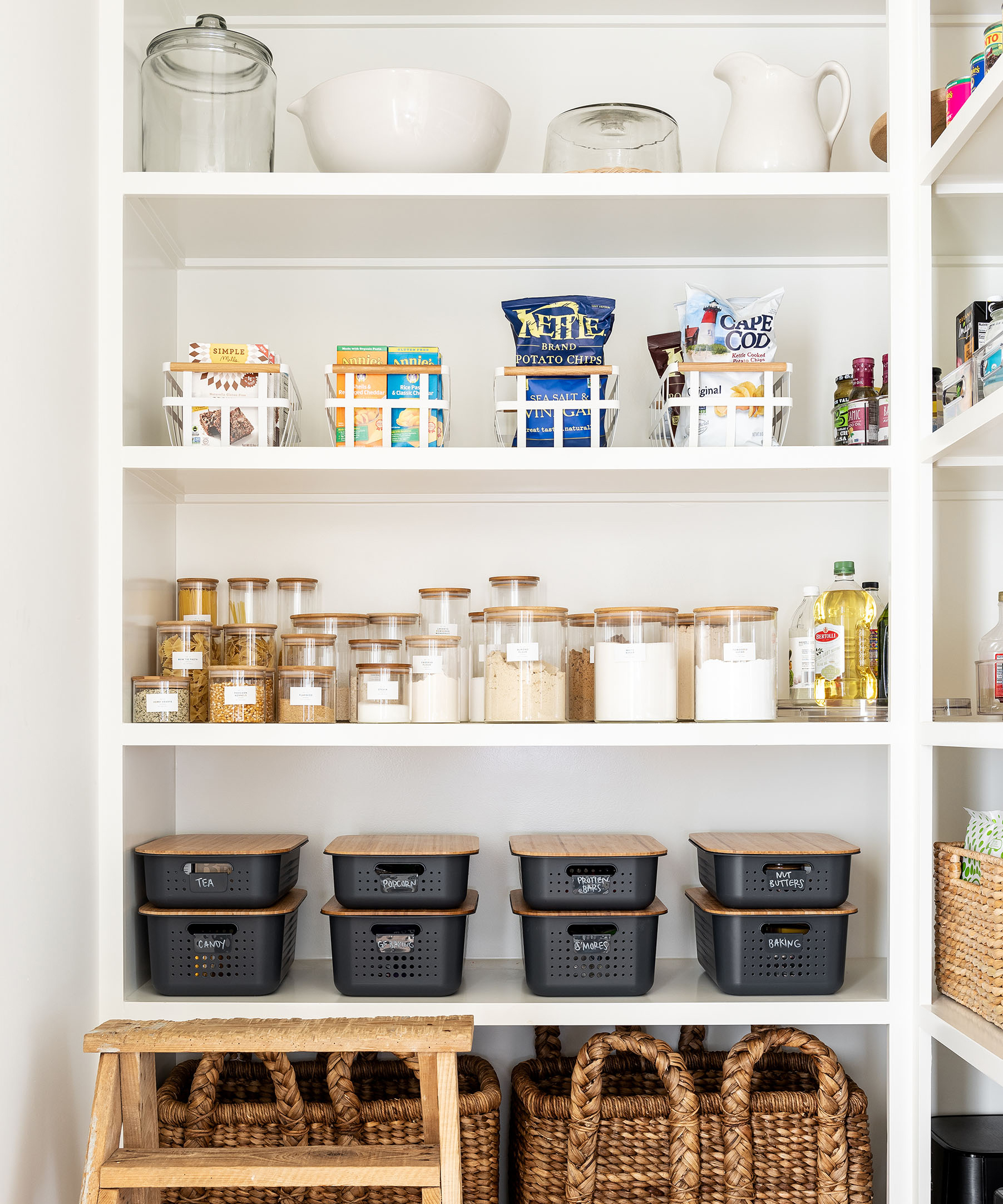
As decanting food into jars for pantries remains popular, more of us have been bulk-buying items to keep our pantries full – both for aesthetics and for practicality. One downside of this in small pantries, however, is there is often not enough space to accommodate the beautifully packed jars and the leftover packets.
Although this shopping method is a great way to save money on those things you use often if you don't have the space to create a good storage area for all of those spares, the kitchen quickly becomes ‘unmanageable’, says Laura Price, professional organizer and founder of The Home Organization. ‘In cases like these, it is more important to have a really good understanding of the number of things you can physically fit in your kitchen. That is the key to keeping things in shape.’
You should then only restock as and when needed.

Laura Price's goal is to help others experience the benefits of living an organized life after discovering that organized homes brought her peace when raising three children in a hectic home. Hence the birth of The Home Organisation, a dedicated team of professional organizers.
2. Restocking incorrectly
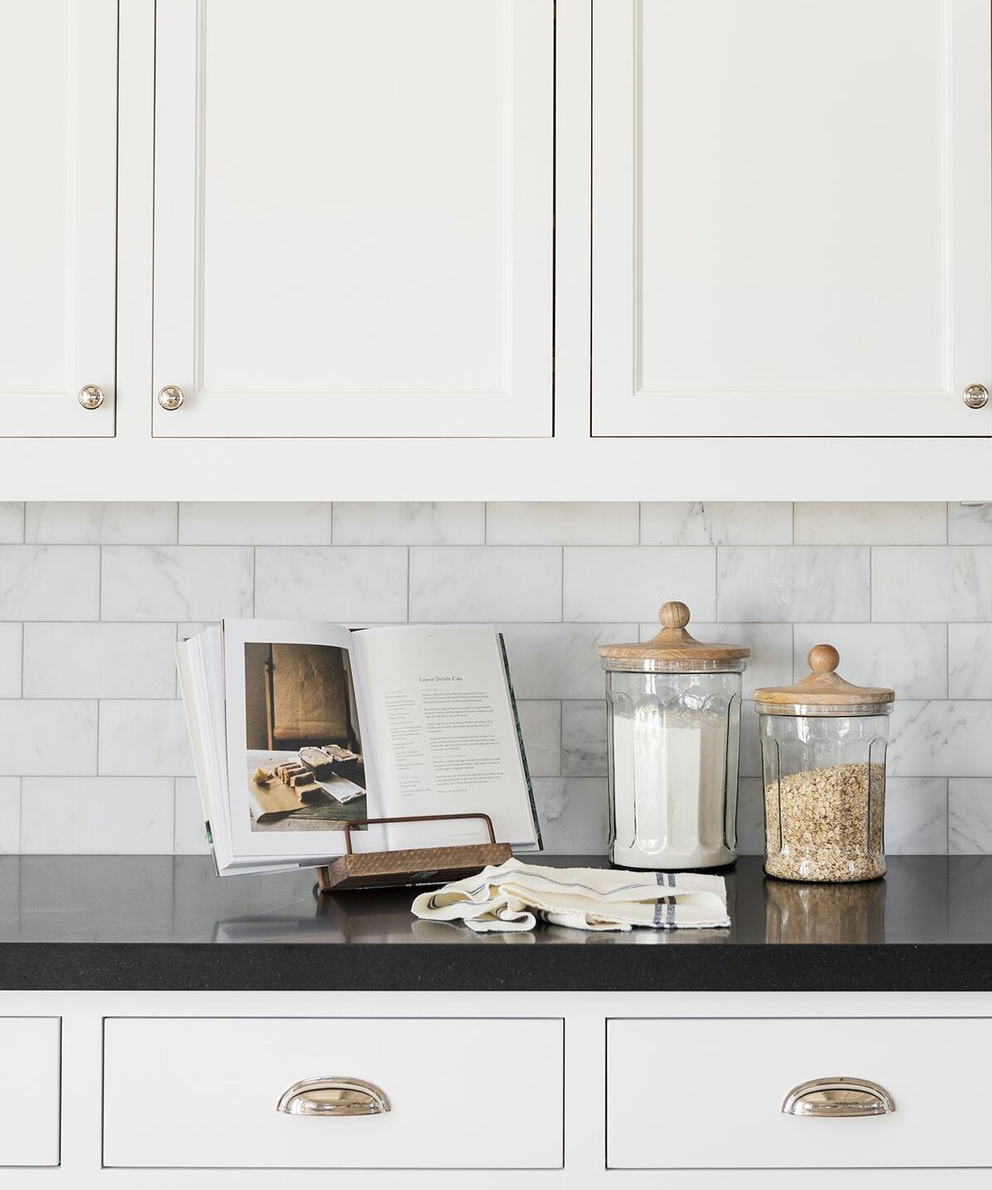
How you restock your pantry is also a common failure point when it comes to any sized pantry, let alone small ones. Stocking up on things you already have many of, or on things you rarely use takes up precious real estate that you could use for other more important items.
It is rare that you will have this issue with staples like pasta, rice, or other grains, but it is important to take your time taking an inventory of your pantry when buying groceries. Not only is this the best way to see what you have and what you need, but it ‘can help you avoid overbuying food or running out of essentials,’ says Barbara Oldham, a professional organizer at The Inspired Home by B.
Make sure you also make a note of how often you run out of those things. The containers you empty the most are your household staples, and more space and time restocking should be dedicated to those.
3. Forgetting to label items
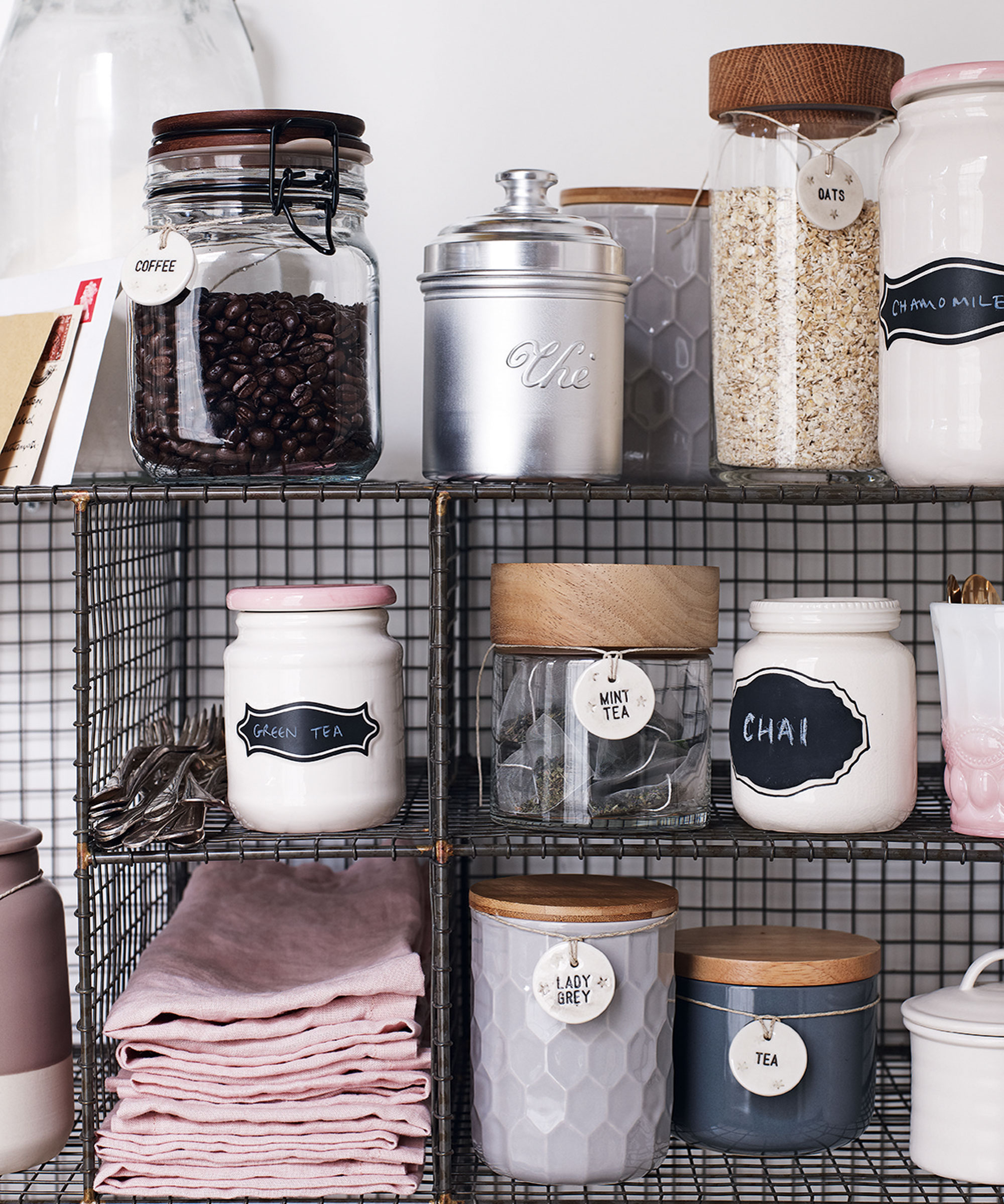
One of the most useful home organization ideas is to use a label maker of some sort – whether that be a small printer or handwritten – to keep tabs on what you have in containers and their expiration dates.
In small pantries, it can seem okay to leave these out and hope you remember what is what, but in reality, none of our minds are that dedicated to remembering the exact expiration for four different foods bought at different times.
Not only is it important to your health, but it is essential to keeping things organized too, professional organizer Barbra Oldham explains. It ensures things are ‘easy to find’ and is especially important ‘if you have a lot of similar items, such as different types of pasta or canned goods,’ she says.
4. Failing to categorize
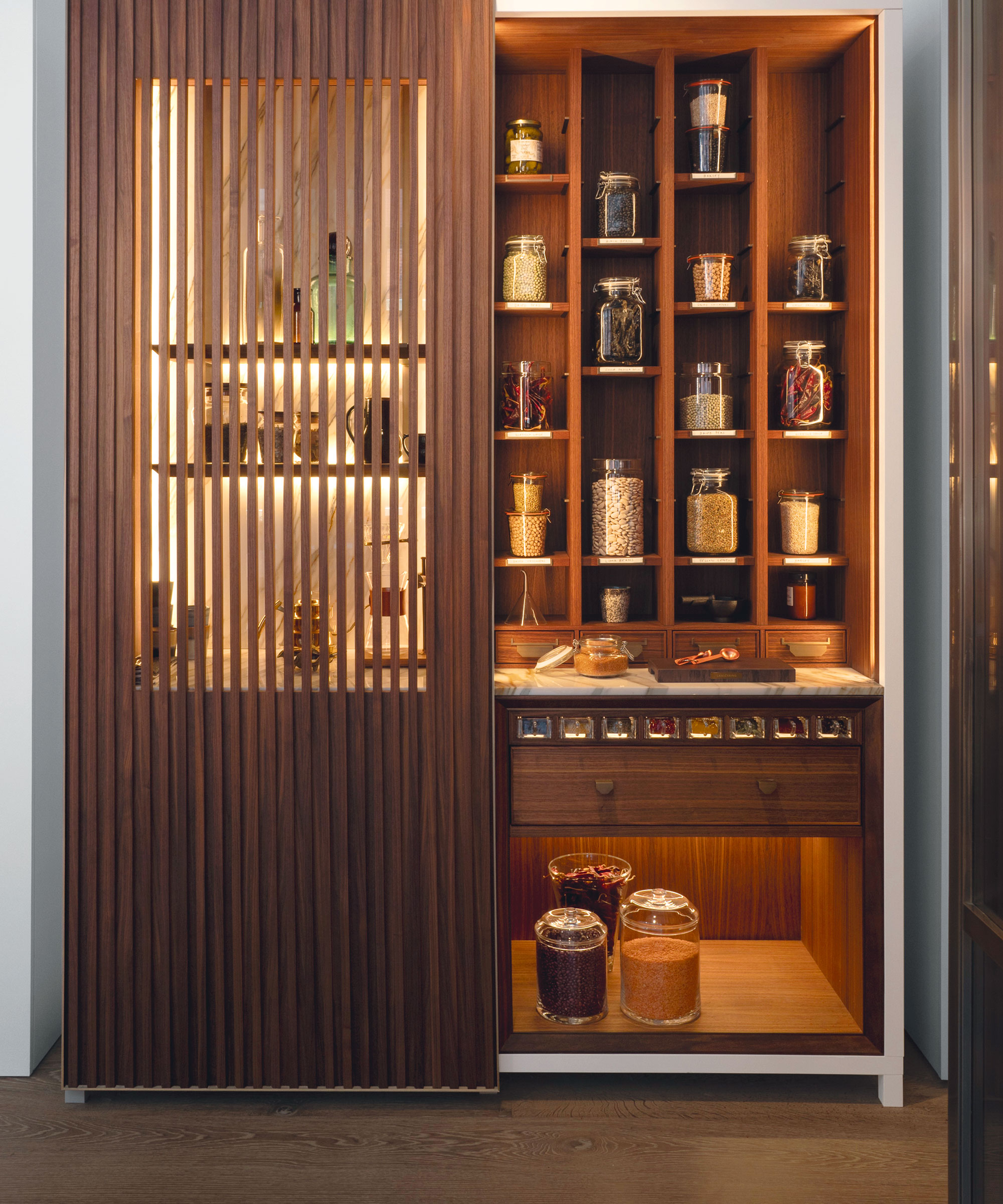
Breaking an area down into small sections really helps when organizing small spaces, even if it is usually only suggested in larger spaces. Creating clear-cut categories is a great way to ensure every product has a ‘home’ that it can return to and mixing these categories, or not having them in the first place, is a one-way ticket to a poorly planned kitchen, says Dawn Falcone, professional organizer and founder of The Chaos Liberator.
‘It makes it difficult to know what you have and what you need when you do this. Placing like items in bins and labeling them, or even adding labels to the edges of your shelves solves this problem.’

Dawn Falcone has been a professional home organizer for 15 years and founded The Chaos Liberator. She previously worked in the fashion and interior design industry and uses her background to organize with an eye towards design.
5. Neglecting to take regular inventory
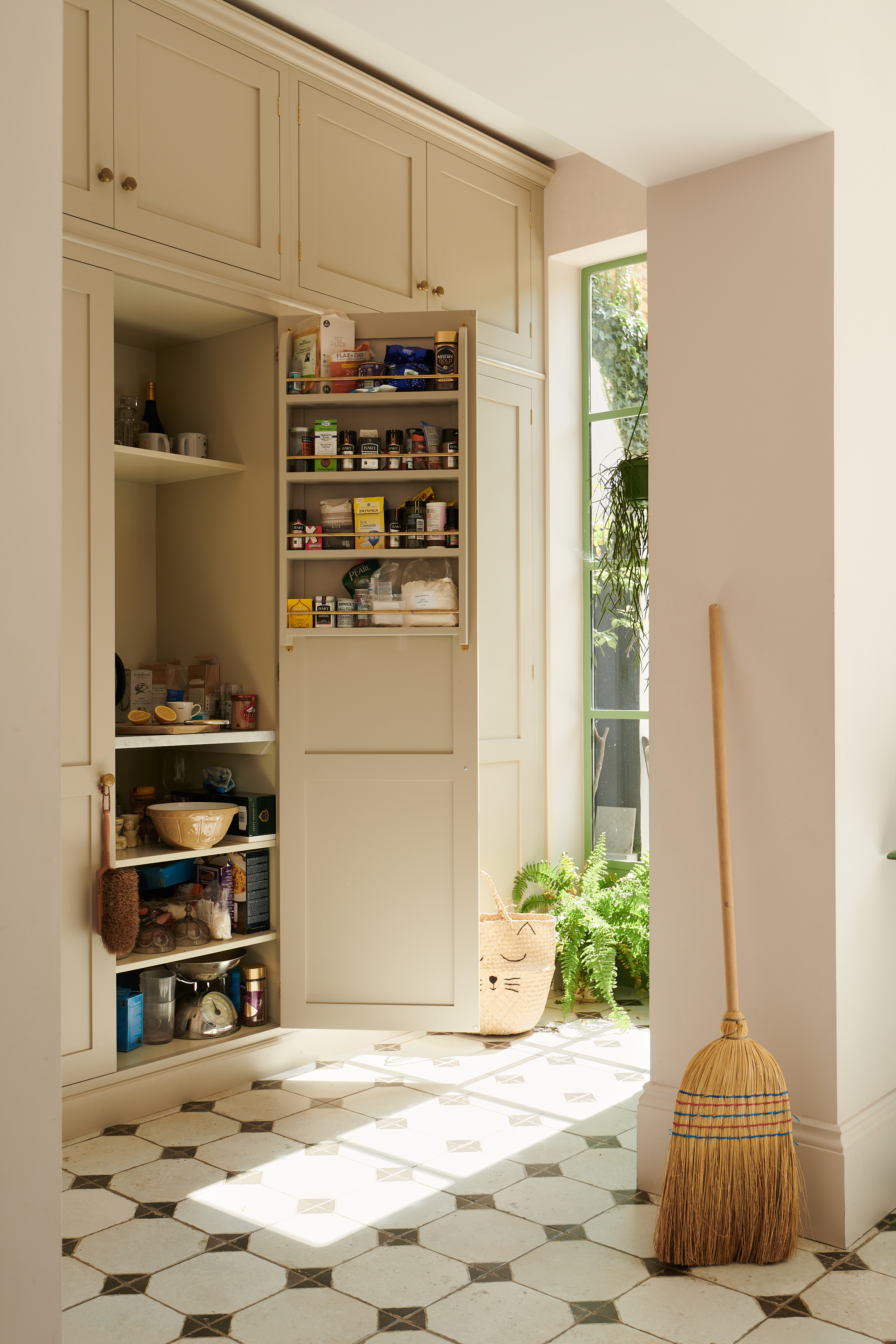
Just because you took inventory once doesn't mean that your pantry is set for life. We are not always creatures of habit, and our food preferences can change frequently meaning our small pantries need to do the same. When organizing a kitchen, checking what we have and what we use most should be done regularly, even up to once a month.
'Editing isn't a once and done,’ reminds Laura Price, home organizer. ‘Regularly look through your pantry to check for expired items or things you thought you'd use, but never did. In a small kitchen there's no room for things you don't use, so keep checking and get rid of them or even reassess your categories and shift them around as needed.’
6. Not using clear storage containers
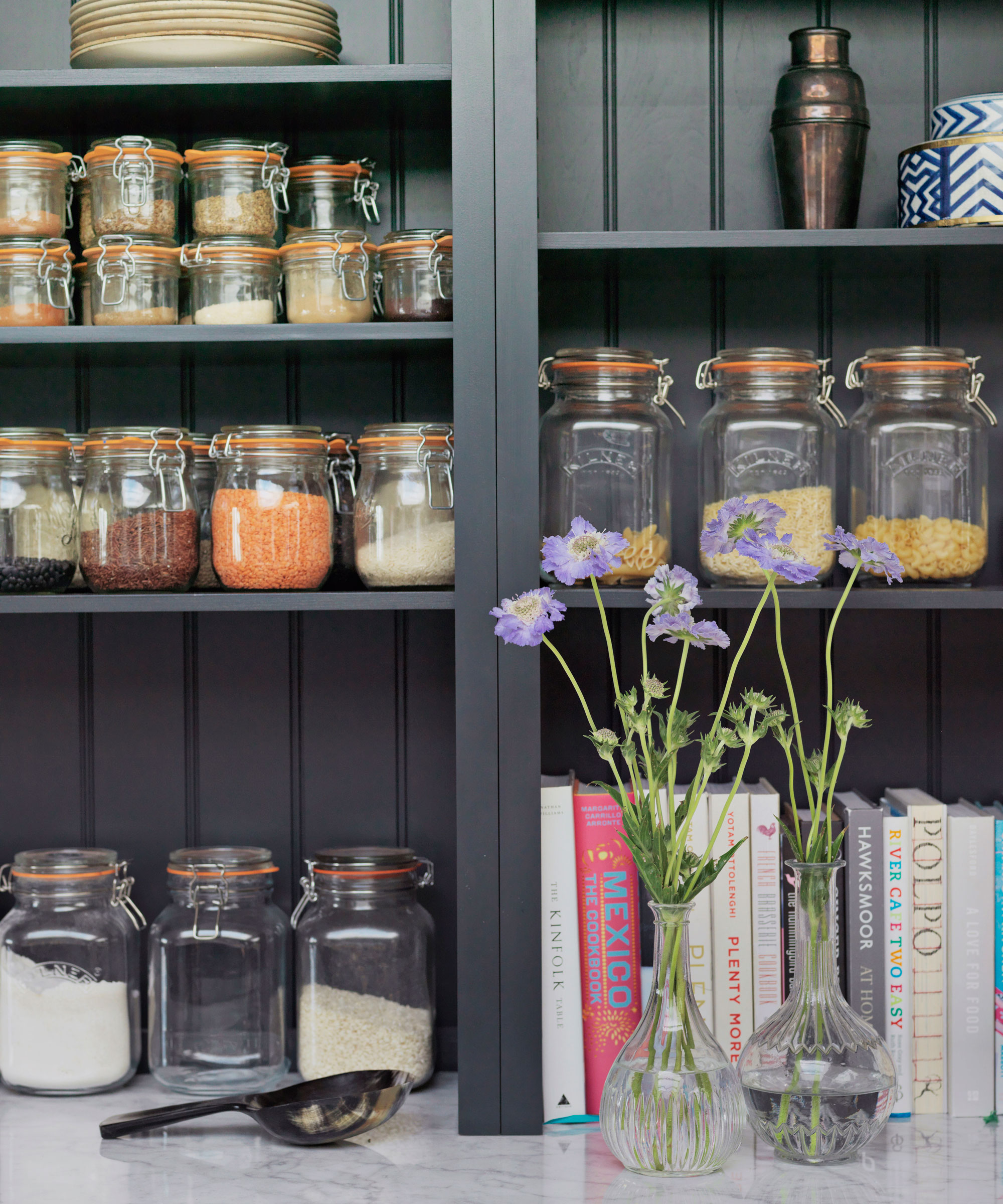
Brabantia Tasty+ Square Canister | Was $57, Now $39.27 at Amazon
Loved by professionals, these storage canisters are great for saving space and preventing food waste by keeping food contained and fresher for longer. They are also dishwasher-safe!
Clear pull-out or stackable bins are one of the many kitchen organizers professionals always buy – and for good reason. These containers are perfect for containing clutter while also allowing you to see what you have at the same time, says professional organizer Barbara Oldham.
Using these clear bins is also a great option if you find yourself losing items at the back of your small pantry, or have trouble keeping tabs on half-empty packets lingering on shelves. ‘Placing these items in bins (again labeled) so everything can be seen, fixes this issue,’ continues Dawn Falcone, professional organizer. ‘I regularly rely on clear plastic bins for an array of home organizing projects.’
7. Not thinking about vertical space

One thing small spaces rarely lack is height. Given that they are often the same height as every other room, you can really benefit from taking your storage up vertically – and not doing this is one of the most common small pantry organizing mistakes you can make.
Whether you have a closed-door pantry or are making small kitchen storage by adding to your walls, adding height is essential, Barbara Oldham, home organizer urges. If you cannot add to your space physically with new shelving on walls or inside doors, then this can be done using common organizers like tiered lazy susans, shelf risers, or adding pull-out drawers,’ she suggests.
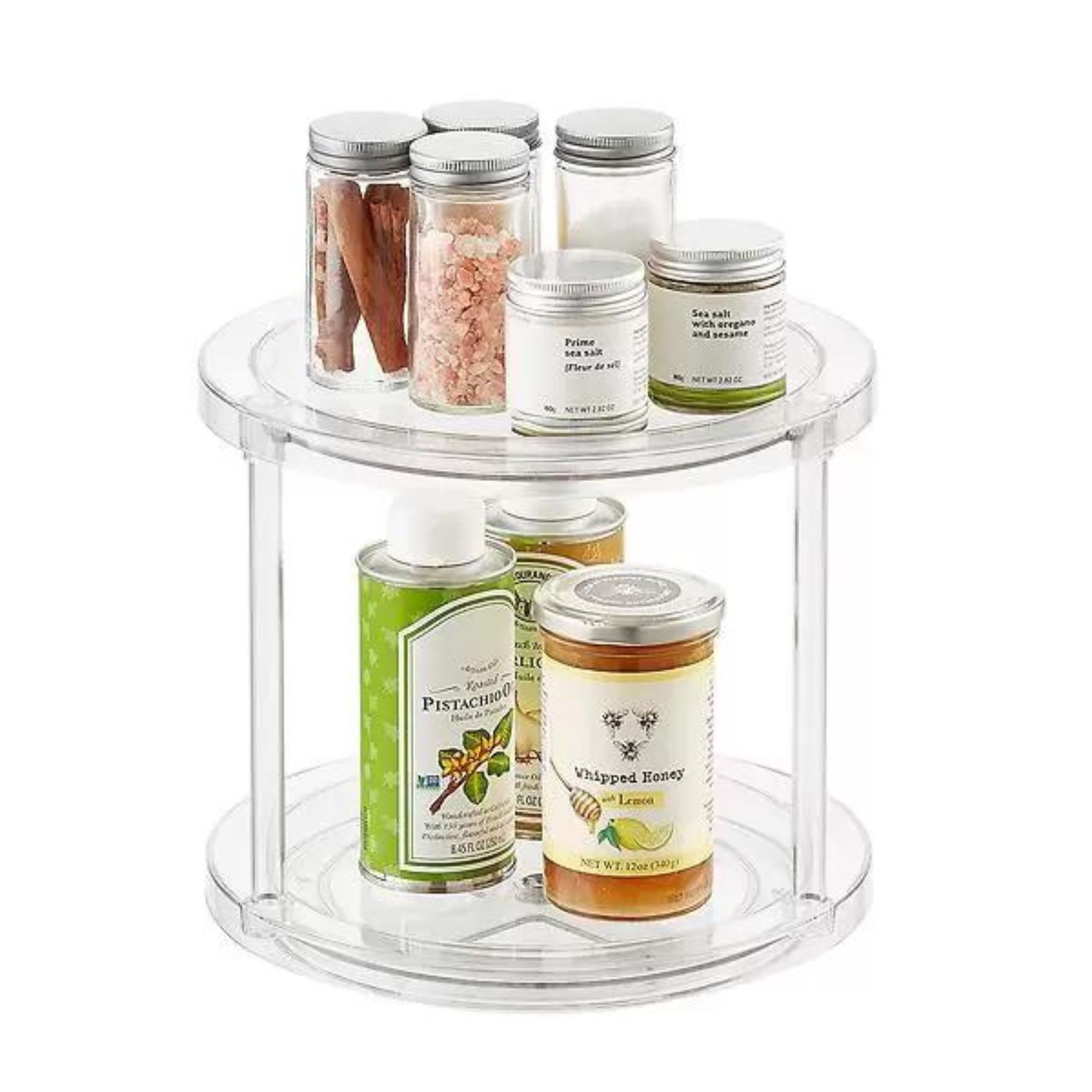
Unlike conventional turntables, there's no center support so both tiers give you unobstructed space for a range of items.
FAQs
How do you declutter a small pantry?
When decluttering a small pantry, it is best to take everything out and lay it on your counters or kitchen table. Leaving the shelves completely empty will allow you only to put the things you need back into the cabinet. Combine anything you have multiple of into one box or packet as necessary and keep duplicates to one side to be stored elsewhere if they will not fit back in your pantry. It may be a good idea to invest in clear containers that fit perfectly onto your shelves to keep your storage uniform and keep tabs on what you have so you do not buy too much excess.
How do I organize my pantry to see everything?
If you like to see everything in your pantry, then it is a good idea to use organizing products that are either transparent or raise objects up higher such as risers to prevent items from being concealed behind other things.
Always store the tallest of items at the back of the pantry, even on risers, and keep smaller things towards the front of the shelves and decant items from opaque boxes and packets into clear glass jars so you can see what you have remaining.
Despite their small footprint it is easy to make some big mistakes when organizing a small pantry. These common errors will often not only make things look chaotic but also prevent your kitchen from functioning efficiently, so it's well worth taking the time to fix them.
Sign up to the Homes & Gardens newsletter
Design expertise in your inbox – from inspiring decorating ideas and beautiful celebrity homes to practical gardening advice and shopping round-ups.

Chiana has been at Homes & Gardens for two years and is our resident 'queen' of non-toxic living. She spends most of her time producing content for the Solved section of the website, helping readers get the most out of their homes through clever decluttering, cleaning, and tidying tips. She was named one of Fixr's top home improvement journalists in 2024.
-
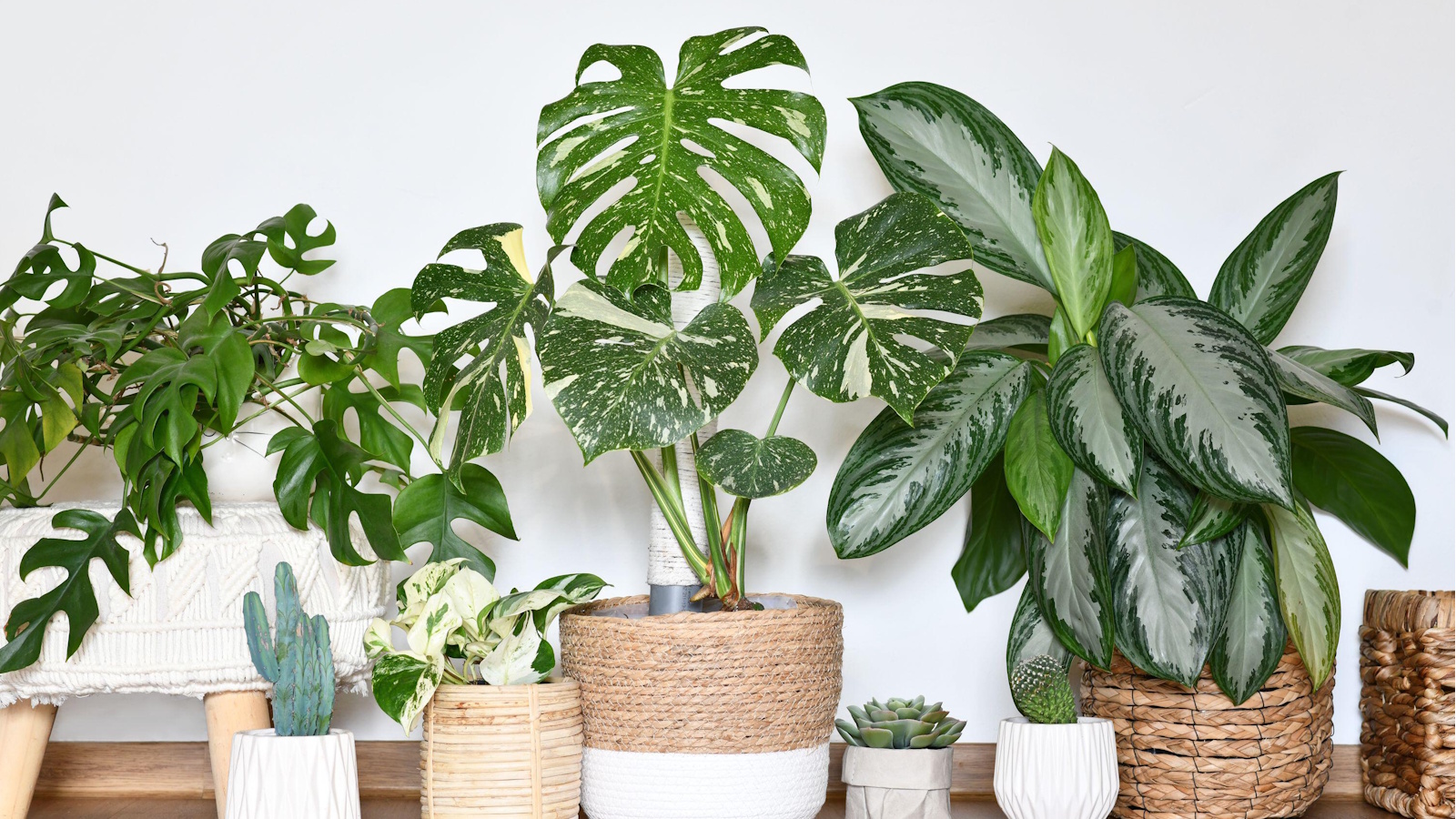 9 longest-living houseplants – expert recommendations and tips for species that can live over 10 years
9 longest-living houseplants – expert recommendations and tips for species that can live over 10 yearsInvest in these houseplants now for years of luscious foliage in your home
By Tenielle Jordison Published
-
 Kris Jenner's 'organic modern' living room champions the most talked-about trend of 2025 – it's the new way to do luxe-minimalism
Kris Jenner's 'organic modern' living room champions the most talked-about trend of 2025 – it's the new way to do luxe-minimalismSimple silhouettes, organic textures, and industrial nuances infuse functional pieces with elegance to create an effortlessly chic and easy-to-live-with living space
By Jennifer Ebert Published
